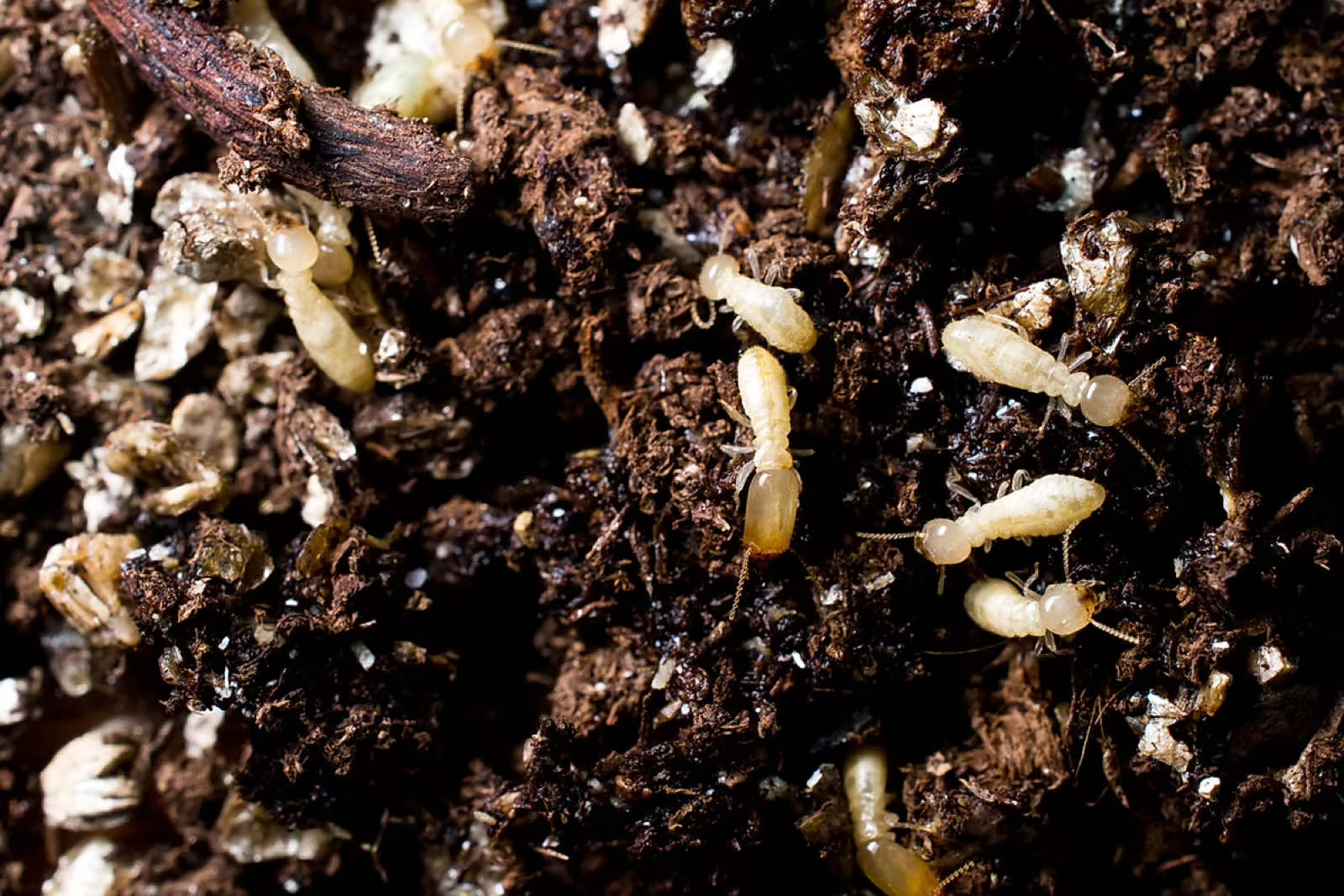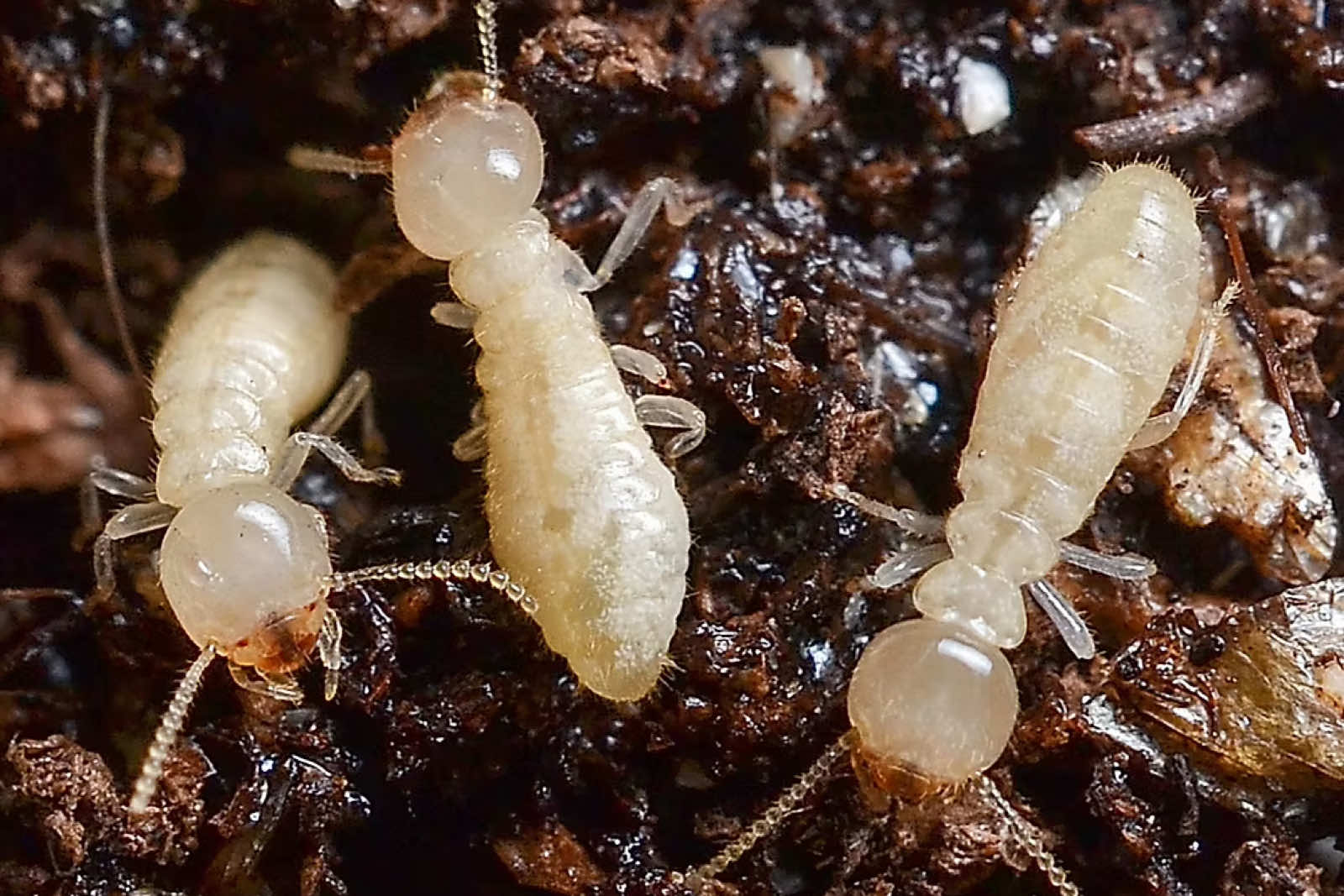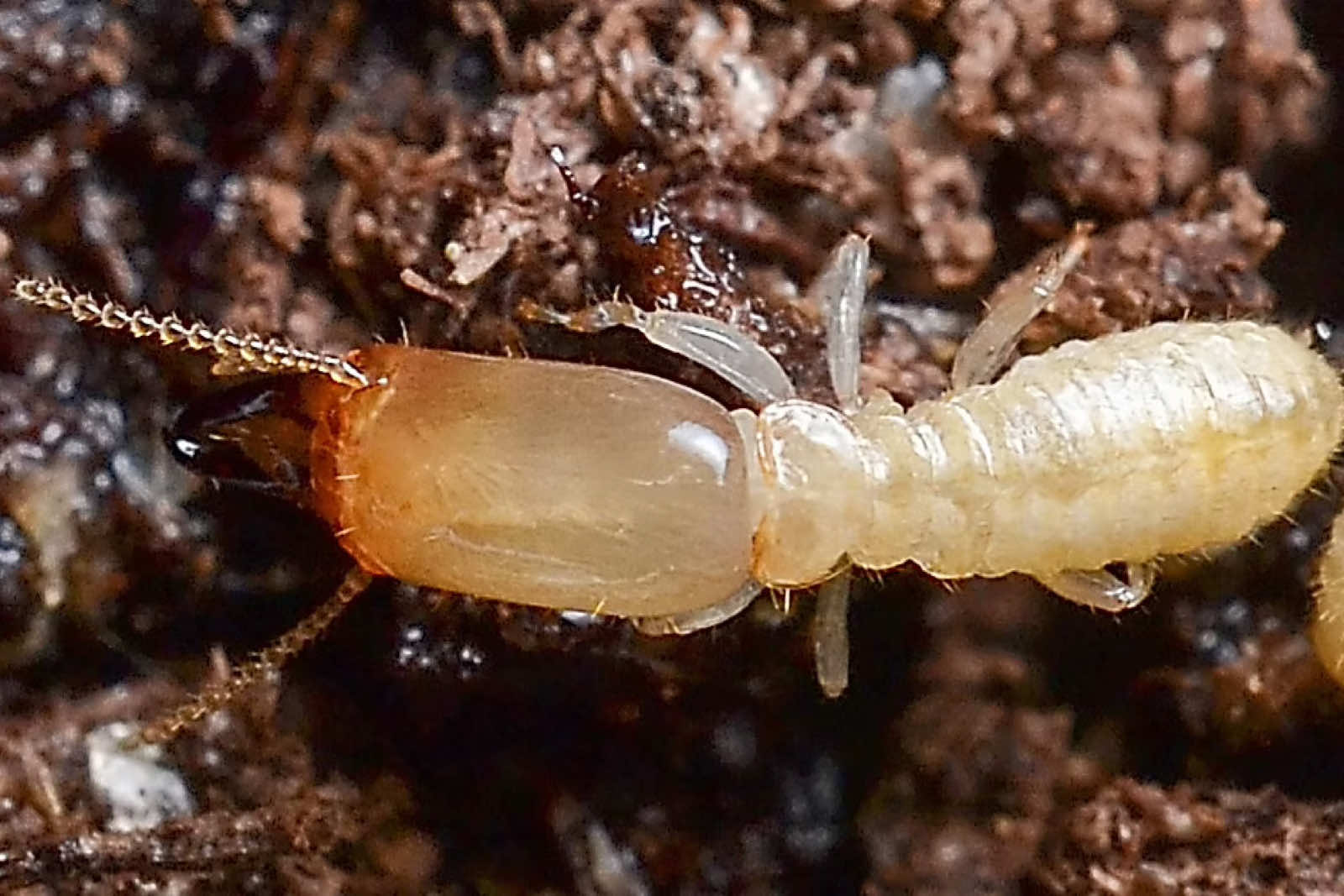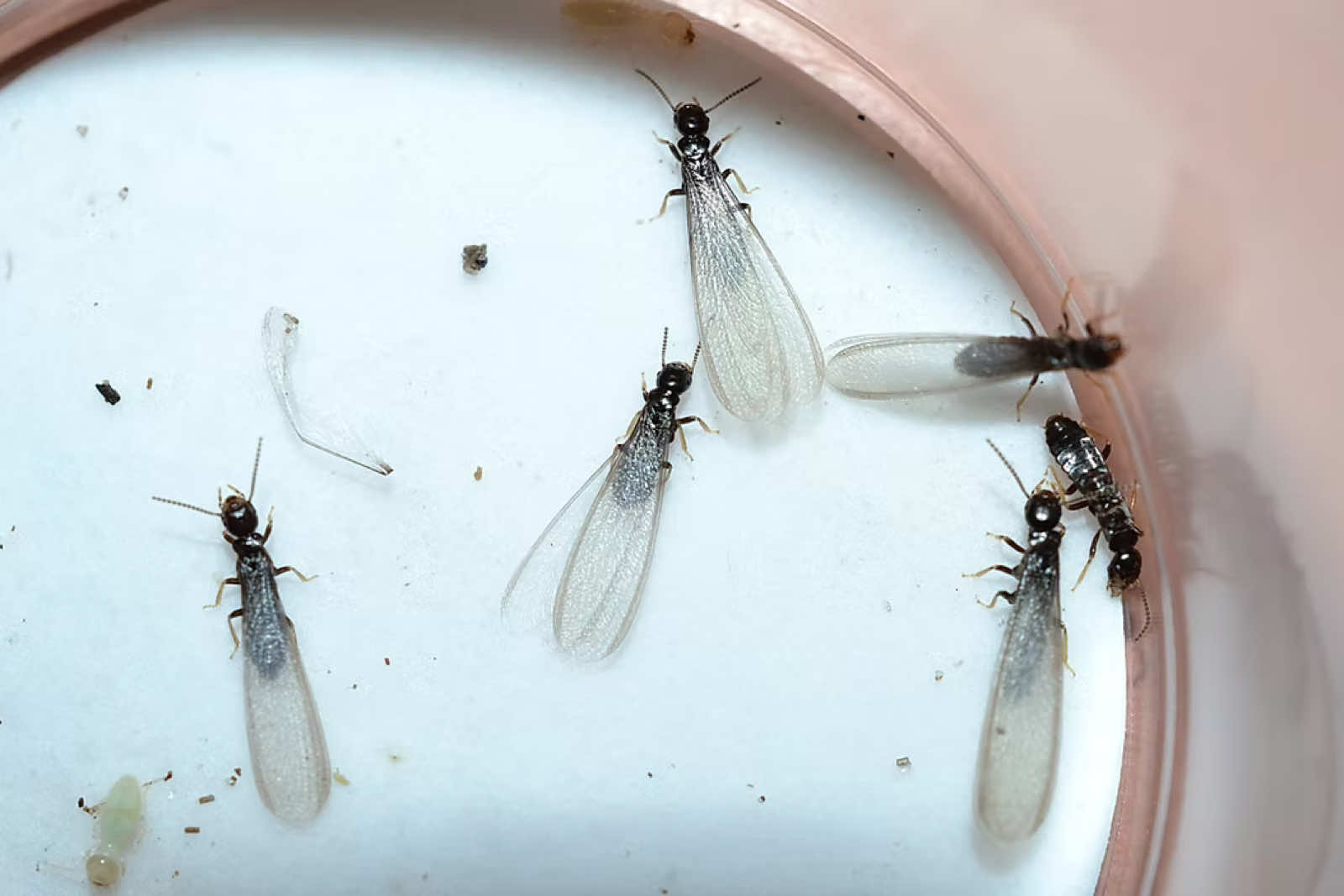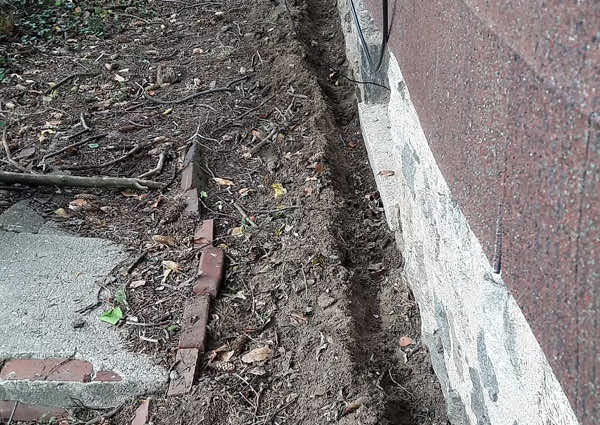Paramount Termite Management
Paramount has the knowledge and expertise to safely and effectively protect every type of structure from termites.
It all begins with an inspection of your property to gather the information we need to design a solution and present you with the options in a pleasant and professional manner.

Termite control is one of our specialties and we only use the most advanced methods and materials available today. In addition, all of our termite management programs are backed by a re-treatment warranty protecting your home against re-infestation.
Need Help with Pests?
Protect Your Home - Get A Quote Now!
Eastern Subterranean Termites (Reticulitermes flavipes)
Although termite species vary throughout the United States, the Eastern Subterranean Termite is the only species that attacks homes, buildings, and other structures on Long Island. Proper inspection and treatment is required to control this voracious pest and hiring the right termite control company to do the job is key.
What are Subterranean Termites?
Subterranean termites have existed for over 55 million years and are arguably the greatest economic pest threat in the United States. In fact, termites cause billions of dollars in damage each year to homes, commercial buildings, and other structures across the US…damage that is not covered by most insurance. In addition to structural issues, termites may also damage other items by eating books, paper documents, and even photographs.
Subterranean termites are social insects living in underground colonies, typically 4-18 inches below the surface. There can be up to about 2 million termites in any one colony. Still, most homeowners never see them until a pest management professional confirms that they have penetrated and damaged your home.
Termites are natural decomposers, making them vital organisms. These voracious little buggers are essential to the health of our forests because they recycle dead and decaying trees into new soil. Termites also aerate and improve the soil as they build and travel through underground tunnels. Unfortunately for us, the primary food source for subterranean termites is wood, which our homes are built with.
A home is often our single most significant investment, so properly eliminating and controlling termites is best left to the professionals. If you see or suspect termites, don’t hesitate to contact us for a free inspection and discuss treatment options.
Eastern Subterranean Termite Quick Facts
Description: A termite colony is divided into three different groups (castes); workers, soldiers, and reproductives. Each caste has its own distinct features and job duties within the colony.
Size: Workers are about 1/8 inch long, soldiers and reproductives are slightly larger, and the queen is by far the largest termite in the colony.
Color: Workers are whitish, soldiers are creamy brown, and reproductives (swarmers) are dark brown to black with wings.
Diet: Cellulose, which is found in wood and wood-based products like paper, drywall, and cardboard.
The Subterranean Termite Worker
Subterranean termite workers are tiny, only measuring about 1/8 of an inch to about a 1/4 inch in size, depending on age. They are pale creamy-white in color and have no wings or eyes.
Termite workers are both male and female, but they cannot reproduce. The body of a termite worker is soft, but its mandibles (mouthparts) are very hard, giving them the ability to chew wood into a spongy pulp. It is believed that individual worker termites can live for up to five years.
Termite workers perform all of the physical labor for the colony and are primarily responsible for the damage found in homes and other structures. They are also the only group of a colony that feeds on wood. They care for the young, repair the nest, locate food, and feed/groom other members of the colony.
Termite workers require consistent moisture to survive, making them vulnerable to dehydration They build dark, humid tunnels (also referred to as “mud tubes” or “shelter tubes”) out of tiny particles of soil and wood that they glue together with their saliva and fecal matter. Termite tunnels are about the diameter of a pencil and built to maintain the proper moisture content, so their soft bodies don’t dry out as they travel within them. Tunnels also protect worker termites from predators (mostly ants).
Even though subterranean termite workers don’t have eyes, they can still detect the difference between light and dark. Once termite workers detect light, they will do everything they can to return to the dark as quickly as possible to avoid predators and dehydration.
The Subterranean Termite Soldier
Subterranean termite soldiers look very much like workers but defend and protect the colony from predators, which are mostly ants.
The distinct difference in appearance between a worker and a soldier termite is that the soldier termite has a larger, elongated, yellowish-brown head with a pair of large jaws (mandibles) that are more adapted for fighting. However, the large mandibles prevent the soldiers from feeding themselves, so they must rely on the workers to physically feed them.
When termite mud tubes or feeding galleries are breached by invaders, a pheromone is created to alert soldiers to rush to the attack site. The soldier termites will mass around the breach site, plug it with their heads, and use their large jaws to puncture, slice and kill the invaders. Unfortunately, subterranean termite soldiers make up only about one to two percent of the colony, so they can be easily overwhelmed if ants attack in large numbers, which they often do.
In addition to defending the colony, termite soldiers also use their oversized and hardened heads to plug breaches in mud tubes that extend from the soil to a food source above ground. Once plugged by the soldiers, these breaches in the mud tube walls are quickly patched up by workers.
Reproductive Termites (Swarmers)
In early spring, typically between March and May, many homeowners on Long Island get overwhelmed by the sudden emergence of a large number of winged insects inside their homes or from the soil outside their homes.
This occurrence is most likely a swarm of subterranean termites, and they are new termite kings and queens who must leave their parent colony to mate and establish new colonies of their own.
A termite swarm is also referred to as a “nuptial flight,” which is a mating ritual termites have in common with other insects, including ants and social bees. When optimal conditions are met, termite colonies produce male and female winged reproductive adults (“swarmer’s” or “alates”) that fly from their hidden underground nests to mate and form their own colonies. Swarming usually occurs during the daytime in early spring, often after a good rain shower.
A termite swarm is a sure sign that a mature colony is closer to your home than you want, especially if a swarm occurs inside. As a homeowner, recognizing termite swarmer’s is critical because it may mean that a well-established colony exists nearby, and there’s a good chance they’ve already begun damaging your home. Acting quickly after a termite swarm can help prevent these voracious wood-eaters from causing severe structural damage to your property.
If you see or suspect a termite swarm inside your home, please contact us for a free inspection and discuss treatment options.
Paramount Termite Protection
Termite Baiting Systems On Long Island
Every year in the United States, termites cause more than $5 billion in damage to
homes and other structures that is typically not covered by insurance policies.
Paramount understands the challenges associated with termites.
That’s why we offer the Trelona ATBS Advance Termite Baiting System for homes and other structures on Long Island, New York City, and Queens.
What is a Termite Baiting System?
A termite baiting system is a long-term approach that protects your home against termites. A termite baiting system involves the installation of termite bait stations in the ground around homes and other structures that are designed to lure foraging termites and kill them. Once termites find a station during their normal foraging routine, they consume the bait inside the station, share it with their nest mates, and the colony gradually declines in numbers until it collapses. Termite baits have been used to control subterranean termites for decades, and termite baiting systems can be used as a home’s sole prevention and control method, or in conjunction with traditional liquid chemical soil treatments.
How do Termite Bait Stations Work?
Termite bait stations are generally installed in the ground surrounding the exterior foundation of your home. These stations are sometimes referred to as “termite traps,” but they do not actually trap termites. These stations contain a bait, often comprised of wood, paper or other cellulose material, that is laced with a chemical that is deadly to termites. As termites naturally forage for food sources, they are attracted to the bait matrix in the stations and eat it.
One of the key characteristics of the termite bait pesticide component is that it is slow acting, which gives affected termites time to return to the colony and spread the bait to others. This “transfer effect” of the bait helps with the destruction of all termites within a colony, including reproductives, soldiers and workers. When workers of a termite colony are eliminated, the food supply chains are cut off, the rest of the termites starve, and the colony eventually collapses.
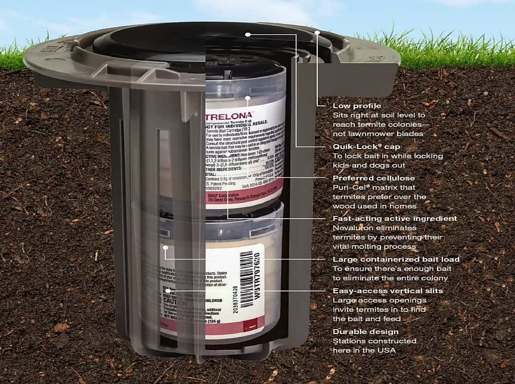
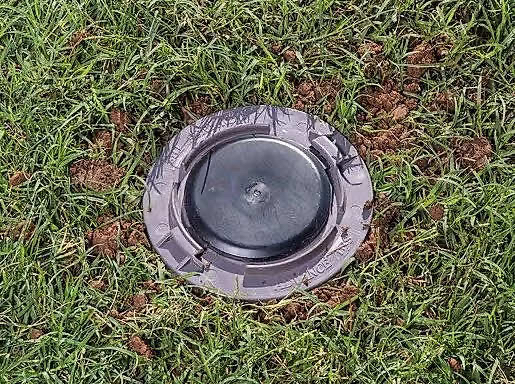
Liquid Chemical Termite Treatments
The two most common termite treatment methods today are
conventional termite barrier treatments (described below) and termite baiting.
In some cases, a quick and direct response is needed to stop termites from affecting the structural integrity of a home.
Such situations may call for an immediate application of liquid termiticide.
The chemicals used to eliminate and control termites are called termiticides and must demonstrate the ability to provide structural protection before the EPA registers them. In most cases, termiticide application can only be properly performed by a state-certified pest management professional.
Liquid Termite Treatment – A Long Honored Tradition
The traditional method of controlling subterranean termites was to create a chemical barrier by applying liquid termiticide into the soil around and beneath a structure to block all possible routes of termite entry. Any termites attempting to pass through treated soil are either killed and/or repelled, depending on the termiticide applied.
For new construction, a liquid chemical termite barrier is created by treating the graded soil and foundation walls before the concrete slab is poured. For an existing building, the perimeter of the foundation is trenched and/or drilled, then treated with termiticide. The goal of the treatment is to put a chemical barrier between the termites in the soil and the structure above. The chemical barrier can also affect those termites already inside a building by preventing their successful return to the soil. In many cases, these termites will die of dehydration.


